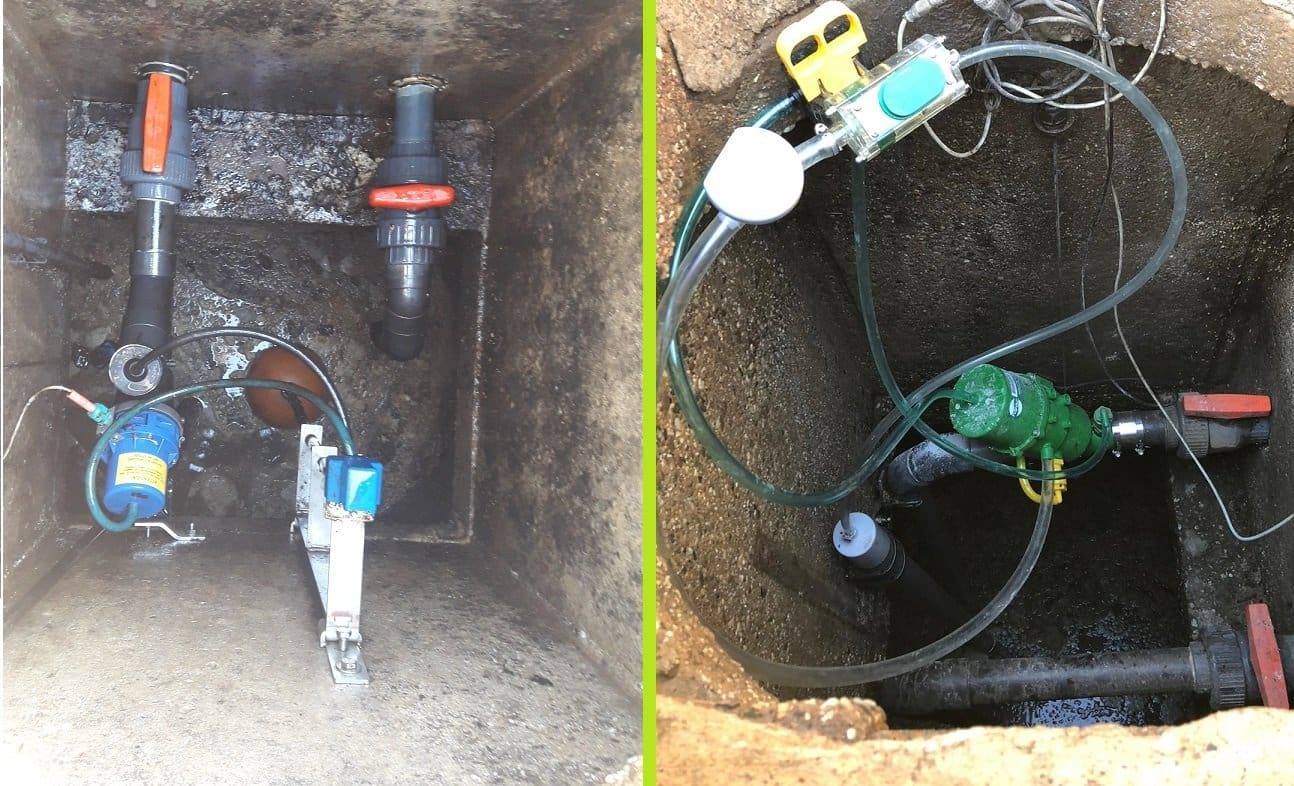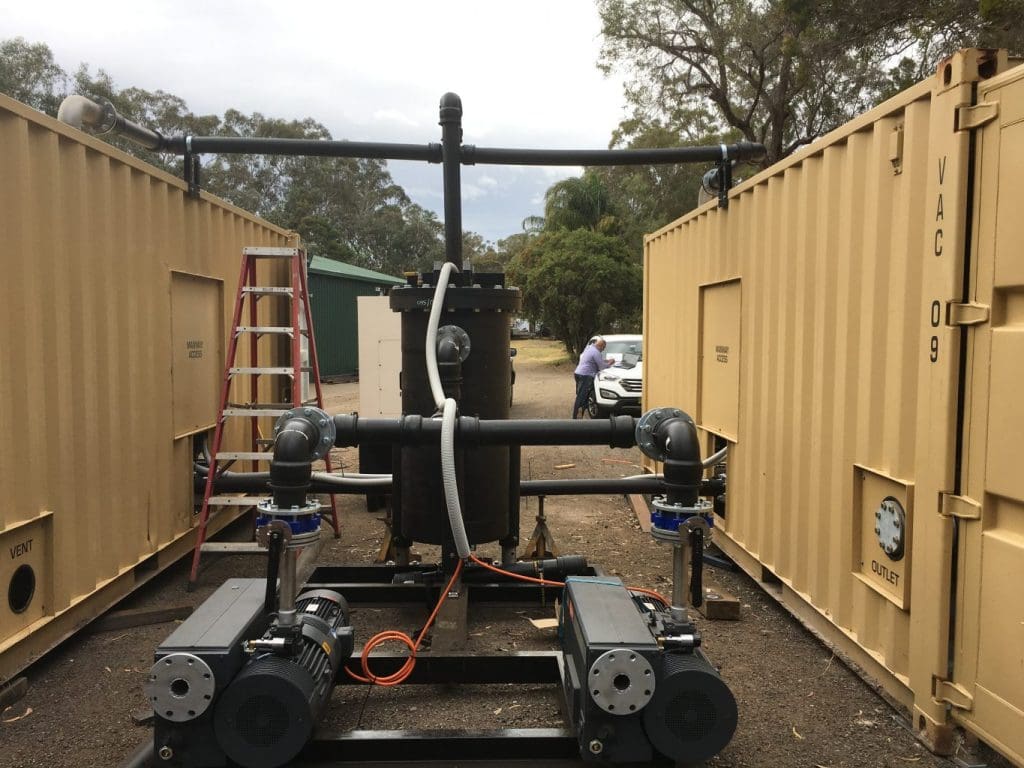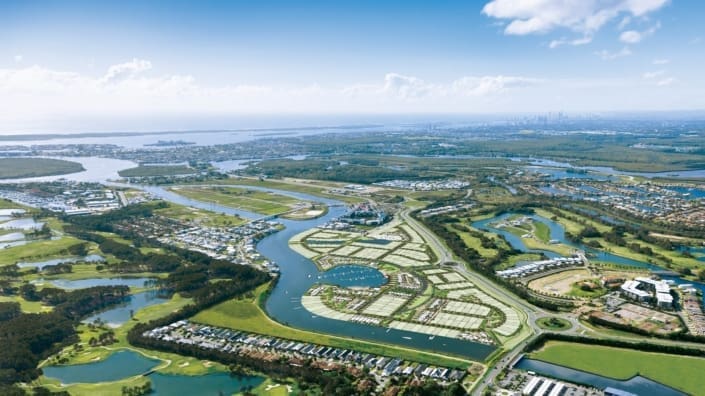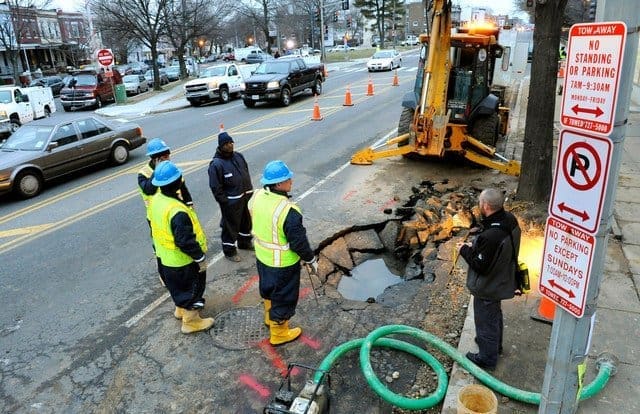Rehabilitating Old 2-inch Vacuum Systems
Those engineers thinking that vacuum sewer technology is new, may be surprised to learn that there are still a number of operating systems installed in the late 1960’s and 1970’s.
These early systems were installed using 2-inch vacuum valves rather than the 3-inch (80mm) vacuum valves commonly used today. The modern inventor of vacuum systems Joel Liljendahl wanted to separate grey (shower/laundry) water and black(toilet) water using vacuum. A 2-inch valve was sufficient for this use and Electrolux who bought the patent started using the 2-inch valve in a number of projects through The Netherlands, Germany, the Caribbean, Australia and the USA.
As a testament to the technology, many of these original projects are still operating, though not as well as modern systems. The same would be said for any technology (cars, computers, televisions).
Sylvania Waters Australia
 In 1968 one of the world’s largest 2-inch vacuum systems was installed at Sylvania Waters, 12 km south of Sydney Australia. The vacuum valves in fiberglass pits collected wastewater from 2 houses sending it to the vacuum pump station. The early system used a ball float controller, similar to what was used in old toilet cisterns. As this was not a separated grey/black water system, a 2-inch valve was clearly going to be a choke point with a 3-inch toilet drainpipe. In 1994 we were hired by Sydney Water to fix up the system, replace the valves and float controllers. Sadly because of the collection pit size and the vacuum main size it was not possible to increase the valves to 3 inch, but the system was improved.
In 1968 one of the world’s largest 2-inch vacuum systems was installed at Sylvania Waters, 12 km south of Sydney Australia. The vacuum valves in fiberglass pits collected wastewater from 2 houses sending it to the vacuum pump station. The early system used a ball float controller, similar to what was used in old toilet cisterns. As this was not a separated grey/black water system, a 2-inch valve was clearly going to be a choke point with a 3-inch toilet drainpipe. In 1994 we were hired by Sydney Water to fix up the system, replace the valves and float controllers. Sadly because of the collection pit size and the vacuum main size it was not possible to increase the valves to 3 inch, but the system was improved.
Now, with it being over 50 years old, some really positive changes can be made, specifically with the help of monitoring systems.
Even though most vacuum regulations call for a minimum sized valve of 3-inches there have still been some 2-inch and 2 1/2-inch valve systems installed. You have all met that client who wants to save $100 on a valve but doesn’t care that the utility will have to spend a fortune on maintenance trying to clear blockages. This has not helped the reputation of vacuum systems, and we often hear of problem systems and high maintenance costs. Quite often it is due to small or bad quality valves or old-fashioned ball controllers still being used.
Central Coast, New South Wales, Australia
Flovac recently upgraded three old 2-inch valve systems at Tacoma and St Huberts. Replacing nearly 1,000; 2-inch valves for new Flovac 2-inch valves. We also installed a new wireless monitoring system and remote mounted all controllers. The client has seen an immediate turn around in operational costs and callouts. At St Huberts the old valves were also using ball float controllers which are similar to old toilet systems and have no place in modern sewerage networks. Infiltration has been identified at multiple locations and resolved.


Reusel, The Netherlands
One recent system replacement we made was in the village of Reusel in The Netherlands. The system was not that old, but the 2-inch valves had a lot of blockages, ball float controllers were used and there was no integrated monitoring system. Our team in the Netherlands has managed to upgrade the system and reduce operational costs considerably.
If you have an old 2-inch system. Contact us at [email protected] and we can give you more details about what can be done to help.



Pump Station Information captured for the operators and managers









 If you are part of a coastal community it could be worse, your old broken pipes could be letting seawater into the system every time there is a high tide or major storm. Salt water can cause major problems at the Treatment Plant. For communities like Miami Beach who get storm surges flooding their sewers and closing their beach on an increasingly regular basis it can cause major economic and health risks. Santa Pola in the Alicante area of Spain found that the impact of global warming and rising sea levels caused a complete failure of their old sewer system.
If you are part of a coastal community it could be worse, your old broken pipes could be letting seawater into the system every time there is a high tide or major storm. Salt water can cause major problems at the Treatment Plant. For communities like Miami Beach who get storm surges flooding their sewers and closing their beach on an increasingly regular basis it can cause major economic and health risks. Santa Pola in the Alicante area of Spain found that the impact of global warming and rising sea levels caused a complete failure of their old sewer system. The town of Santa Pola with over 10,000 homes replaced their whole gravity sewer system with a Flovac vacuum sewerage system. As vacuum mains are laid in shallow trenches it was possible to skirt around, above and below exiting infrastructure and eventually replace the network.
The town of Santa Pola with over 10,000 homes replaced their whole gravity sewer system with a Flovac vacuum sewerage system. As vacuum mains are laid in shallow trenches it was possible to skirt around, above and below exiting infrastructure and eventually replace the network.  When looking at upgrading a gravity sewer, pipe relining can be an option, but in many cases this becomes an ongoing expensive option and be too difficult in a large network. Some utilities just look to replace the old pipework, but in most communities this is just not practical. This could mean uprooted gardens, roads out of use for a number of months, noise, dust and a huge cost.
When looking at upgrading a gravity sewer, pipe relining can be an option, but in many cases this becomes an ongoing expensive option and be too difficult in a large network. Some utilities just look to replace the old pipework, but in most communities this is just not practical. This could mean uprooted gardens, roads out of use for a number of months, noise, dust and a huge cost. Flovac vacuum sewers have shown time and again, their versatility. This means either their ability to handle density changes or climate changes. It might even mean changes in ground conditions as happened in Christchurch New Zealand when they suffered from a terrible earthquake. The old gravity sewers in the city and surrounding suburbs broke and left residents with no service for months. Vacuum sewers have now replaced a large portion of the gravity sewers in Christchurch and although difficult has proved to be a better long term solution for the residents and operators.
Flovac vacuum sewers have shown time and again, their versatility. This means either their ability to handle density changes or climate changes. It might even mean changes in ground conditions as happened in Christchurch New Zealand when they suffered from a terrible earthquake. The old gravity sewers in the city and surrounding suburbs broke and left residents with no service for months. Vacuum sewers have now replaced a large portion of the gravity sewers in Christchurch and although difficult has proved to be a better long term solution for the residents and operators. 